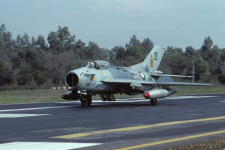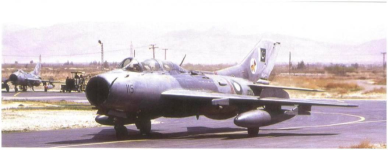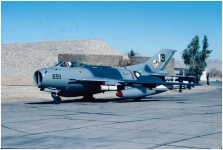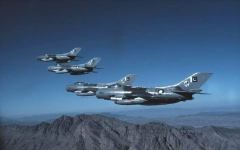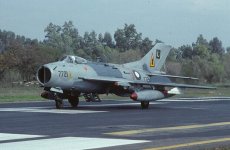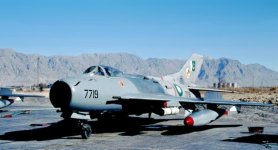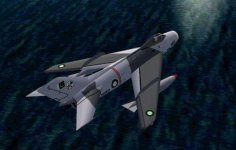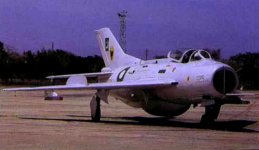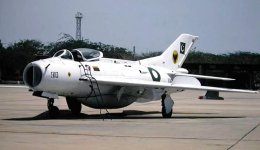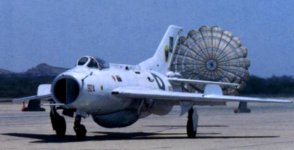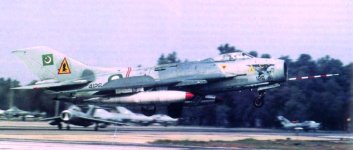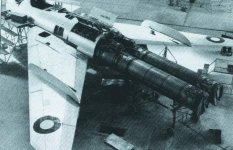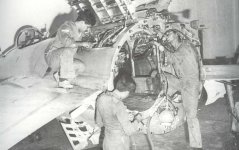Navigation
Install the app
How to install the app on iOS
Follow along with the video below to see how to install our site as a web app on your home screen.
Note: This feature may not be available in some browsers.
More options
Style variation
You are using an out of date browser. It may not display this or other websites correctly.
You should upgrade or use an alternative browser.
You should upgrade or use an alternative browser.
F-6 of Pakistan Air Force
- Thread starter ghazi52
- Start date
Fatman17
THINK TANK: CONSULTANT
- Apr 24, 2007
- 37,389
- 43,760
- Country of Origin

- Country of Residence


To research
To research
SHENYANG J-6 'FARMER-D'
Identity record
| DEVICE : | SHENYANG J-6 'FARMER-D' |
|---|---|
| Manufacturer: | Shenyang Aircraft Corporation |
| Designation : | D-6 |
| Name / Nickname: | |
| Allied/NATO code: | Farmer-D |
| Variant : | F-6 |
| Commissioning: | 1961 |
| Native country : | China |
| Category : | Hunters from the 60s and 80s |
| Role and missions: | Fighter-bomber, interceptor. |
“The beautiful Chinese evolution of the Soviet MiG-19”
History of the device
The Cold War saw the emergence of an aeronautical industry in communist China. Until then it was in its infancy but following various agreements between Beijing and Moscow it was finally able to take off and try to catch up. In the absence of truly concrete projects of indigenous origin, this industry had to content itself with producing under license or even modifying already existing Soviet aircraft. And in this area one of the first successes was the Shenyang J-6 Farmer-D fighter-bomber, several dozen examples of which were exported outside China.Looking for a fighter plane capable of outdoing the best jets then present in Japan and Taiwan, all of American manufacture, the Chinese government negotiated in the spring of 1958 authorization to build the Mikoyan-Gurevich MiG-19S under license . It was the state aircraft manufacturer Shenyang who was rewarded and the plane received the official designation J-6 , with an order for 800 copies.
In fact on this machine there had been no engineering work on the part of the Chinese, the J-6 being then strictly a MiG-19S built locally, without the slightest adaptation to local needs or equipment. The pre-production aircraft flew in September 1959 and while the first production examples entered service in December 1961.
At the same time the Atlantic alliance gave the aircraft the code name Farmer-D , thus indicating a real lineage with the original Soviet model.
It was in 1963 that things changed when Shenyang obtained authorization to develop the J-6A and J-6B derived respectively from the MiG-19P and the MiG-19PF. Above all, Moscow allowed the Chinese aircraft manufacturer to include foreign equipment such as British Martin-Baker Mk-10 ejection seats or American AIM-9B Sidewinder air-to-air missiles produced under local license in Harbin. Avionics equipment was provided by French and Italian companies, particularly in terms of communications for the F-6A and the F-6B planned for export markets.
At the same time, Beijing increased the initial order with 1500 more examples, 1200 for the air force and 300 for the naval aviation. However, as no navalization was planned, the Chinese navy's J-6Bs were intended for land hunting.
From 1965 the Shenyang J-6 Farmer-D became the main fighter of the Chinese air force, the one which made it possible to both patrol along the ( a little more than ) 22,100 kilometers of borders and carry out aircraft interceptions. enemies. The strategic reconnaissance and airborne espionage aircraft of the US Air Force were thus their primary target.
A few J-6Cs derived from the MiG-19PFM were also developed, without the possibility of carrying air-to-air missiles and only equipped with autocannons.
Two other specific versions were developed: the two-seater JJ-6 dedicated to operational transformation and advanced training and the single-seater JZ-6 optimized for photo reconnaissance. These aircraft were offered for export as FT-6 and FR-6 .
Initially, it was in Asia that Shenyang sold its J-6s . Bangladesh, Burma, Cambodia, North Korea, Iraq, Pakistan, and Vietnam purchased it. The latter country even had the luxury of obtaining aerial victories using 30 millimeter cannon fire in September 1965 and August 1967 against respectively a Lockheed F-104C Starfighter of the US Air Force and a Grumman A-6A Intruder of the US Navy .
However, the main customer for the aircraft remained Pakistan with its 250 combat and 25 advanced training examples. With its French SNEB 68 millimeter rockets, the J-6 was transformed during the Indo-Pakistani war into a formidable platform for anti-tank combat and close tactical support. Thanks to its AIM-9B Sidewinder air-to-air missiles it achieved several victories against attack aircraft and fighters of the Indian Air Force . To his credit, he has eight planes shot down, including two Hawker Hunters , three Sukhoi Su-7 Fitters , an English Electric Canberra , and even a Mikoyan-Gurevich MiG-21 Fishbed, although it is reputed to be much superior. The eighth plane is not clearly known, it could be a fourth Su-7 Fitter, but without certainty.
The Pakistani and Vietnamese successes made the Shenyang J-6 Farmer-D an aircraft that the so-called non-aligned countries were keen to export. Thus copies were supplied to Egypt, Somalia, Sudan, and Zambia. Even a European country flew on it, Albania and its small air force attached to the Warsaw Pact purchased a batch of 85 examples in the early 1970s, including around ten advanced training two-seaters.
Gradually becoming obsolete in the mid-1970s following the arrival on the international market of aircraft such as the Dassault Mirage F1 , General Dynamics F-16 Fighting Falcon , and Mikoyan MiG-29 Fulcrum, the Shenyang F-6 ceased quickly to sell. The aircraft manufacturer then refocused on upgrade contracts with the Chinese authorities. At the dawn of the 21st century around 500 J-6s of all series were still flying as well as around 150 JJ-6s of operational transformation.
In 2013, the Guizhou aircraft manufacturer developed the WJ-6 , a drone version of a flying target based on the concept of the American QF-16 . Around twenty examples seem to have since been transformed, at the rate of two to three planes per year.
Often considered the first real success of Chinese hunting, the Shenyang J-6 Farmer-D turned out to be much more than a local version of the famous Soviet MiG-19. He also had a better longevity than him. Having given birth to the Nanchang Q-5 Fantan ground attack aircraft, it can also be proud of having marked the history of aviation. At the end of 2022, a few examples of the second generation fighter were still flying in Africa, Sudan and Tanzania to be exact.
- KEYWORDS: CHINA , SHENYANG , D-6 , FARMER-D
- CATEGORIES: HUNTERS FROM THE 60S-80S
SHARE
Photos of the Shenyang J-6 'Farmer-D'
Technical characteristics
| MODEL : | SHENYANG J-6A FARMER-D, MEETS CHINESE AVIATION STANDARDS |
|---|---|
| Span: | 9.20 m |
| Length : | 12.60 m |
| Height : | 3.88m |
| Wing surface: | 25.00 m2 |
| Motorization: | 2 Tumansky RD-9BM turbojets |
| Total power: | 2 x 3330 kgp. with afterburner |
| Armament: | Three 30mm caliber NR-30 cannons and four 227kg bombs or up to four PL-2 and/or PL-5 air-to-air missiles. |
| Payload : | - |
| Loaded weight: | 8700 kg |
| Max speed : | 1450 km/h at 12250 m |
| Practical ceiling: | 20000 m |
| Max distance : | 700 km with drop tanks. |
| Crew: | 1 |
| [...] | Go to the comparator... |
Color profile

3 view plan
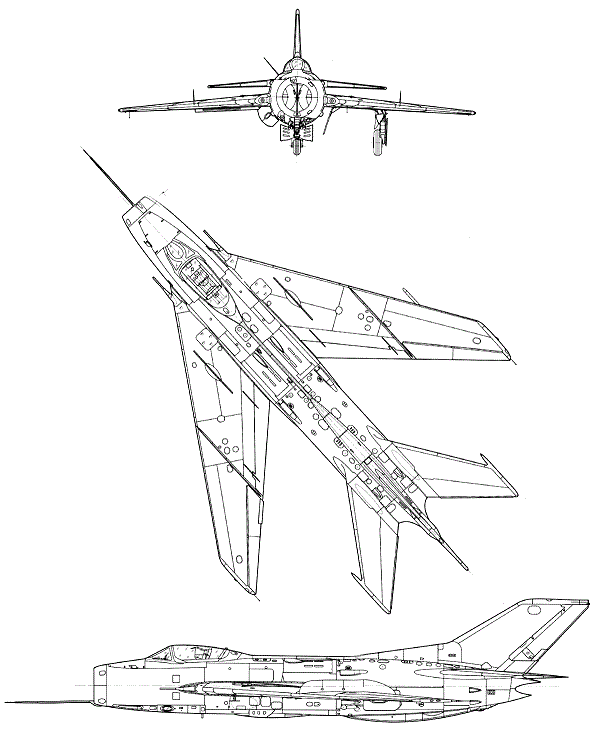
SHEET EDITED BY
Arnaud
Passionate about both civil and military aviation since my early childhood, I constantly try to confront new challenges in order to increase my knowledge in this field. Big fan of rants, good food, and evenings with friends.

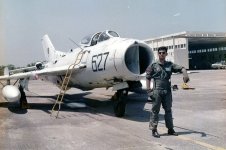
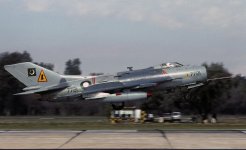

Last edited:
Users who are viewing this thread
Total: 1 (members: 0, guests: 1)
Pakistan Defence Latest
-
-
-
Reports: Bajwa agreed to curtail Pakistan’s ballistic missile program (8 Viewers)
- Latest: Liquidator
-
-
Country Watch Latest
-
-
Not just engines, Tejas Mk-1A delivery could be hit over key Danish part, now on export blacklist (9 Viewers)
- Latest: Yasser76
-
-
Here Are Seven Steps That Union Government Must Take To Secure The ‘Chicken’s Neck’ Corridor (6 Viewers)
- Latest: Beijingwalker
-



